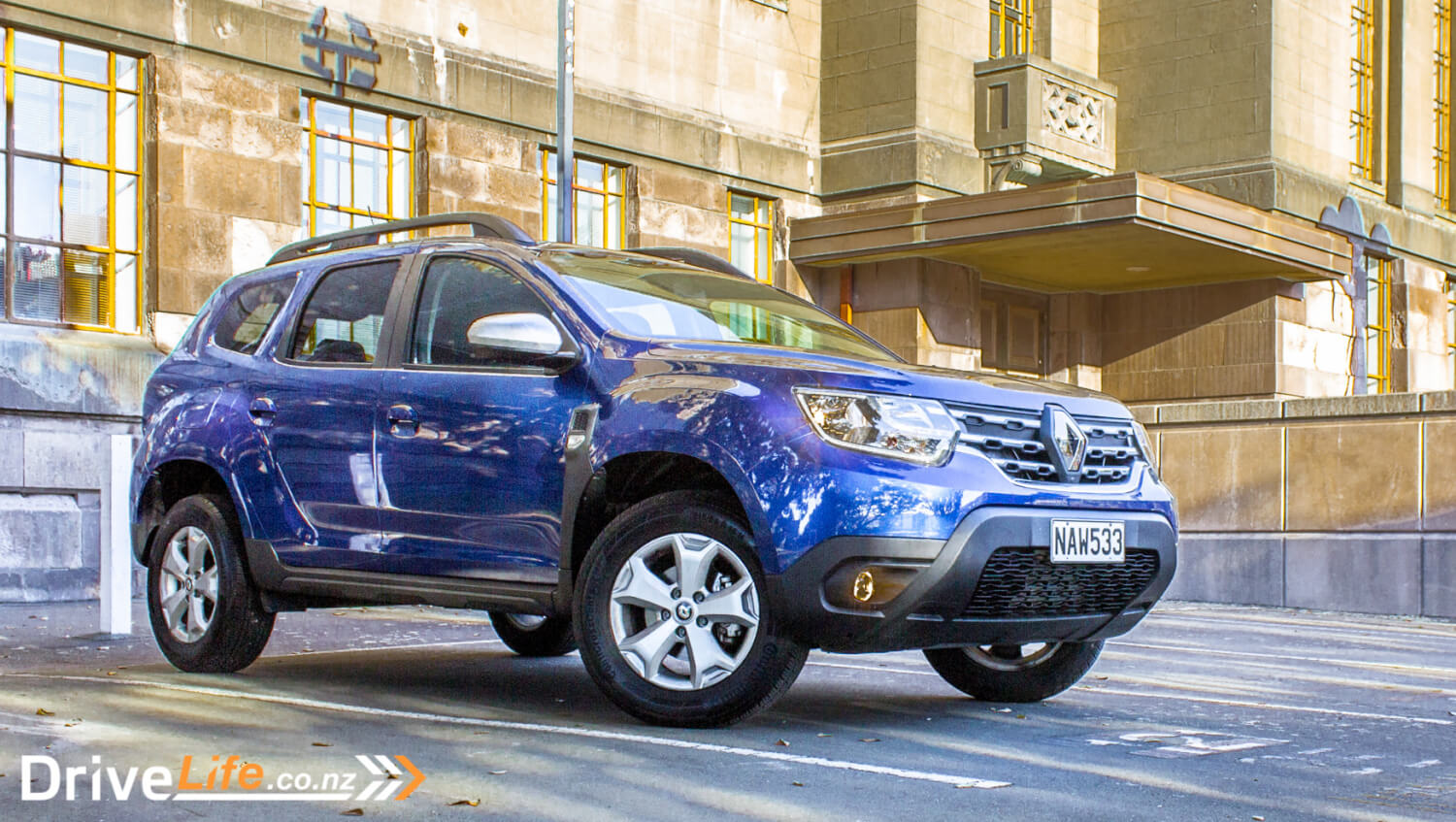With a launch price of $27,990, the Renault Duster came to the market with a bang, giving you a good-sized SUV for the money. Now, the price has risen to its RRP of $29,990. Will this affect sales? Can the Duster mix it up with the other SUVs in this range, like the Kia Seltos, Toyota Yaris Cross or the Mitsubishi ASX?
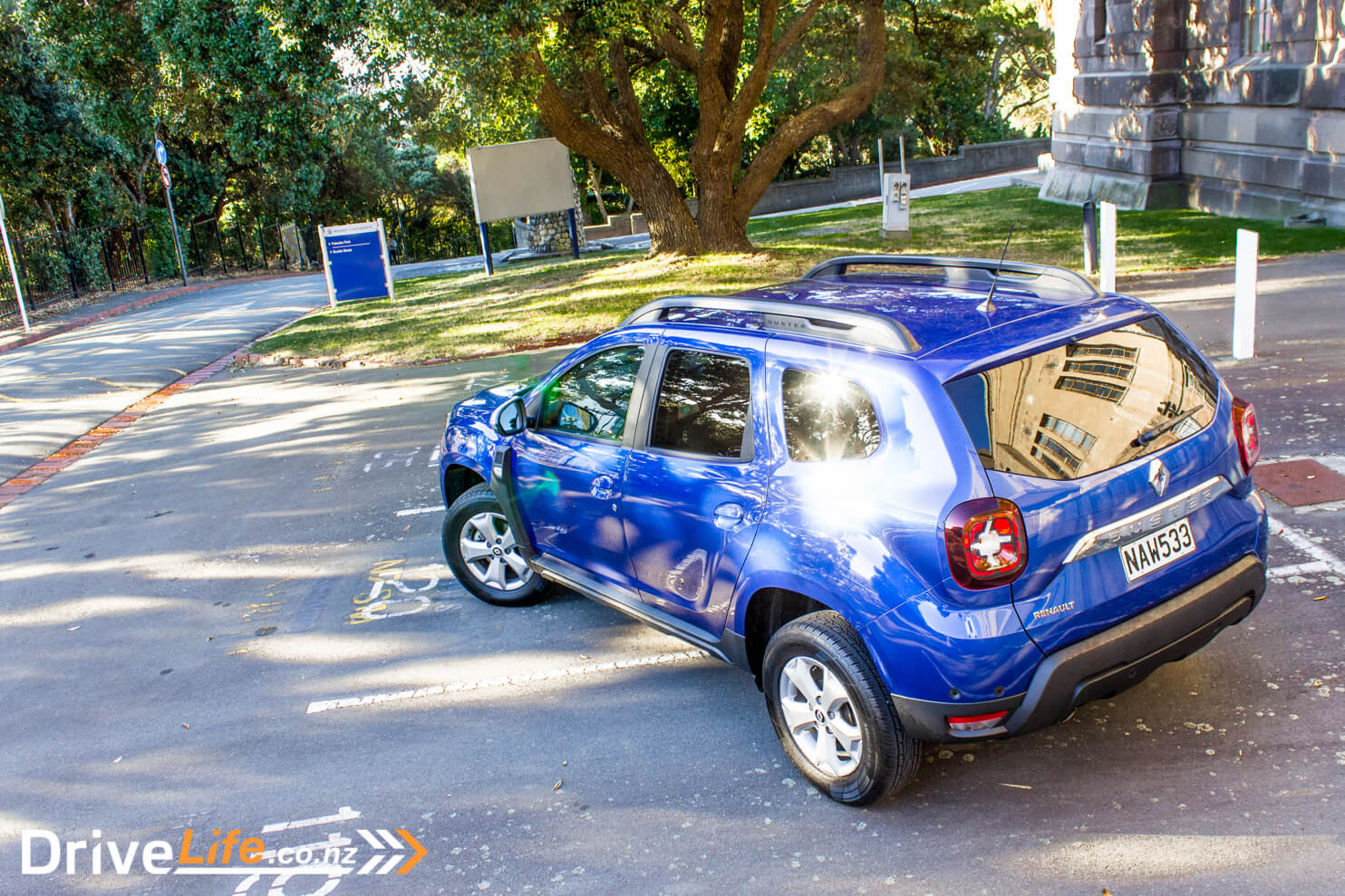
Now with a 3-year warranty and with over 2 million sold worldwide as well as a string of ‘Best SUV’ awards from around the world, this car should be excellent. We took one on for a week to see how it performs on the Daily Drive.
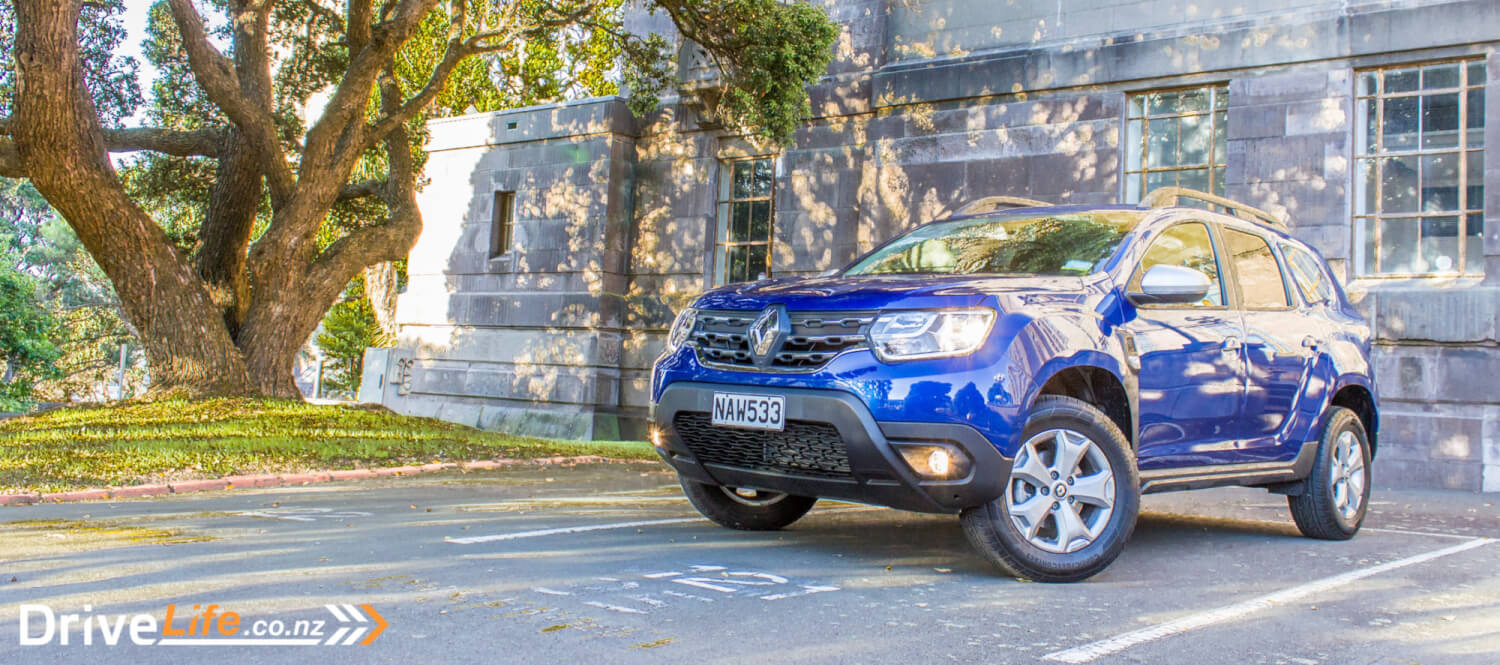
What’s In The 2021 Renault Duster Range?
There’s not a lot of choice in the Duster range – there’s just the one model. It’s fitted with a 1.6-litre, 4-cylinder petrol engine that puts out 84kW of power at 5,500 rpm and 146Nm of torque at 4,000 rpm. It’s priced at $29,990.
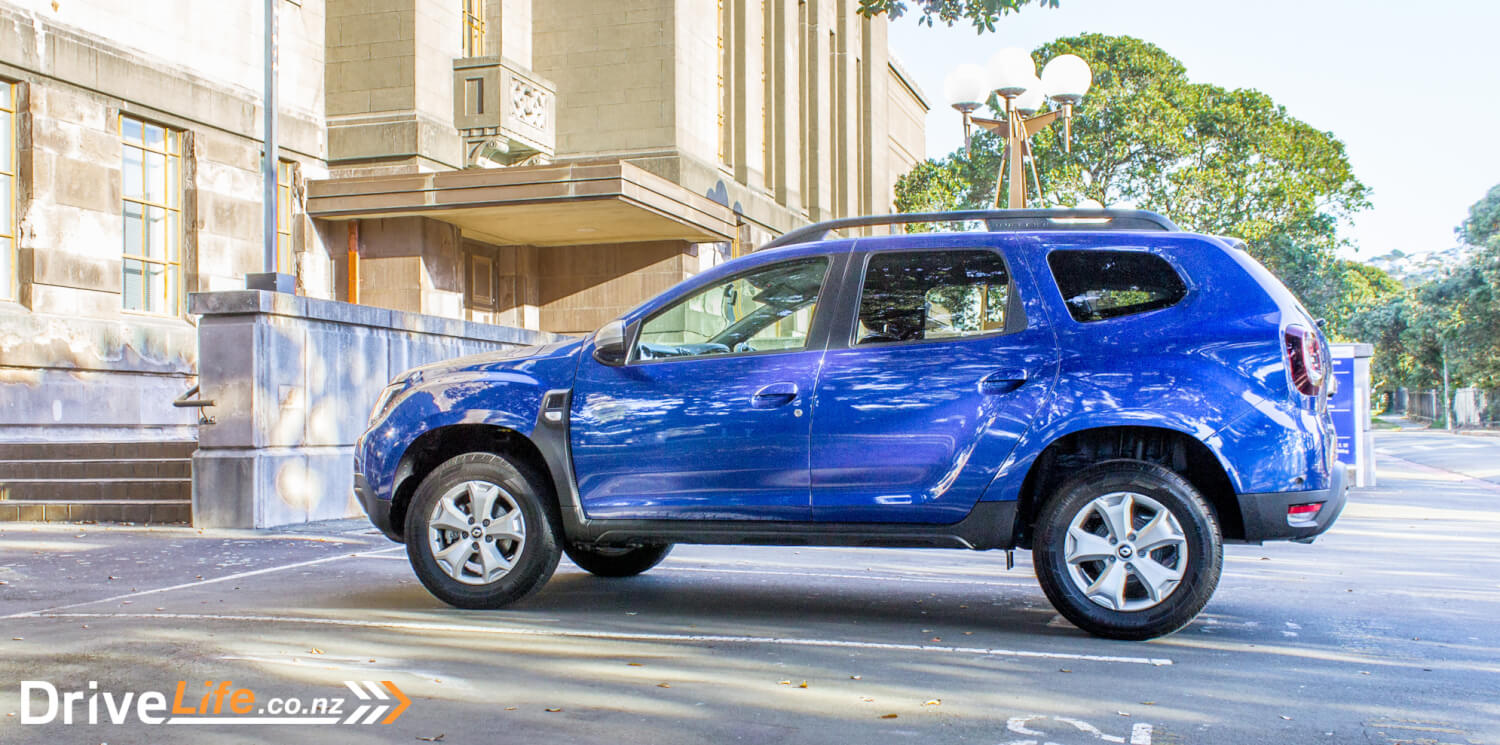
Feature-wise, it does ok with a 7” touchscreen central display, Apple CarPlay and Android Auto capability, SatNav, a multi-view camera, blind spot monitoring, LED daytime running lights, rear parking sensors, cruise control and speed limiter, 16” alloy wheels, hill start assist, front and rear fog lights, and tyre pressure monitoring.
You can read more about the Duster on Renault New Zealand’s website.
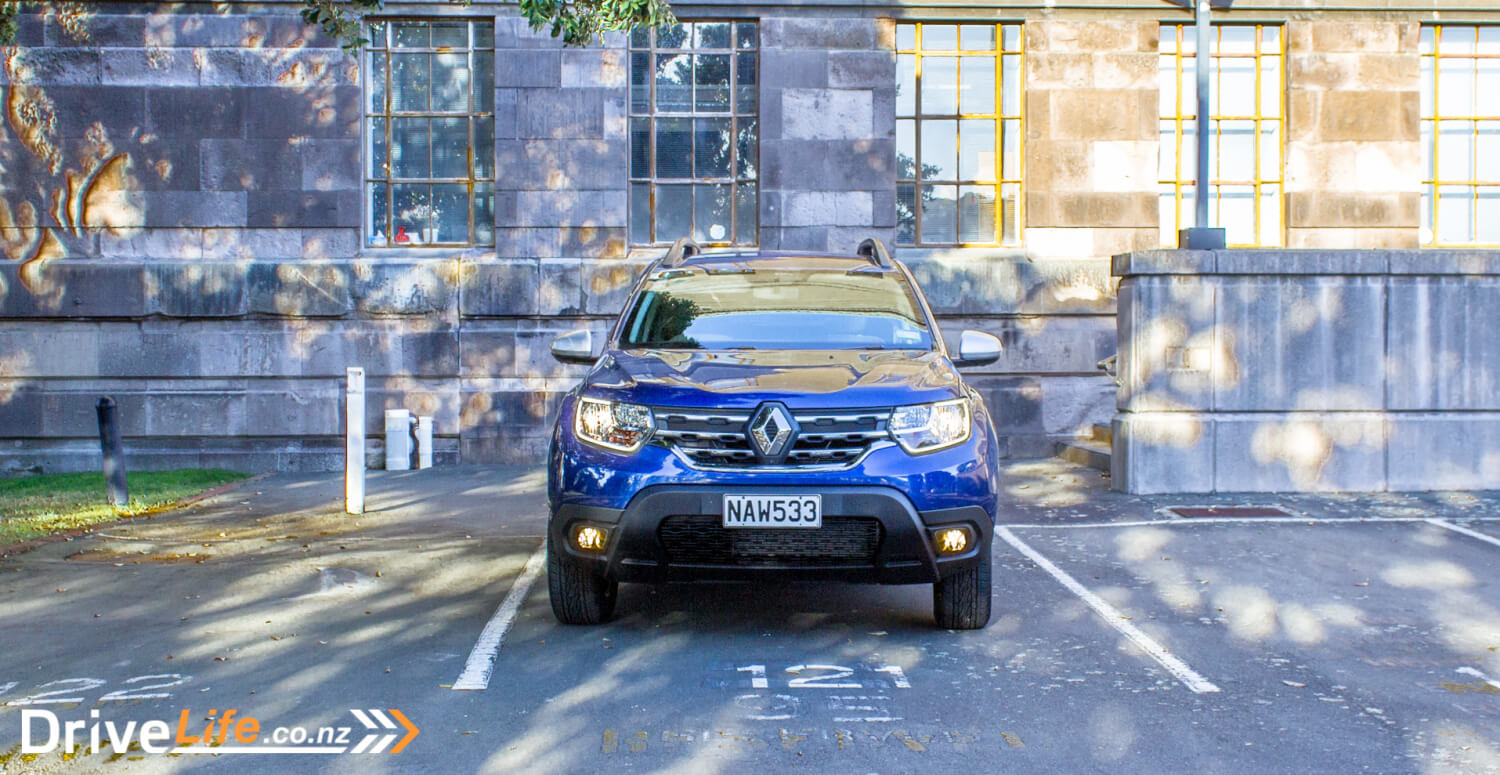
First Impressions Of The 2021 Renault Duster?
It’s a little easy to miss the Duster on the road if you are following one, as the rear looks so much like a Jeep Renegade. The tail lights remind me of a cartoon character when they’ve died, and they have those little crosses where their eyes should be. Take a look next time you see a Duster or a Renegade but be warned, what has been seen cannot be unseen.
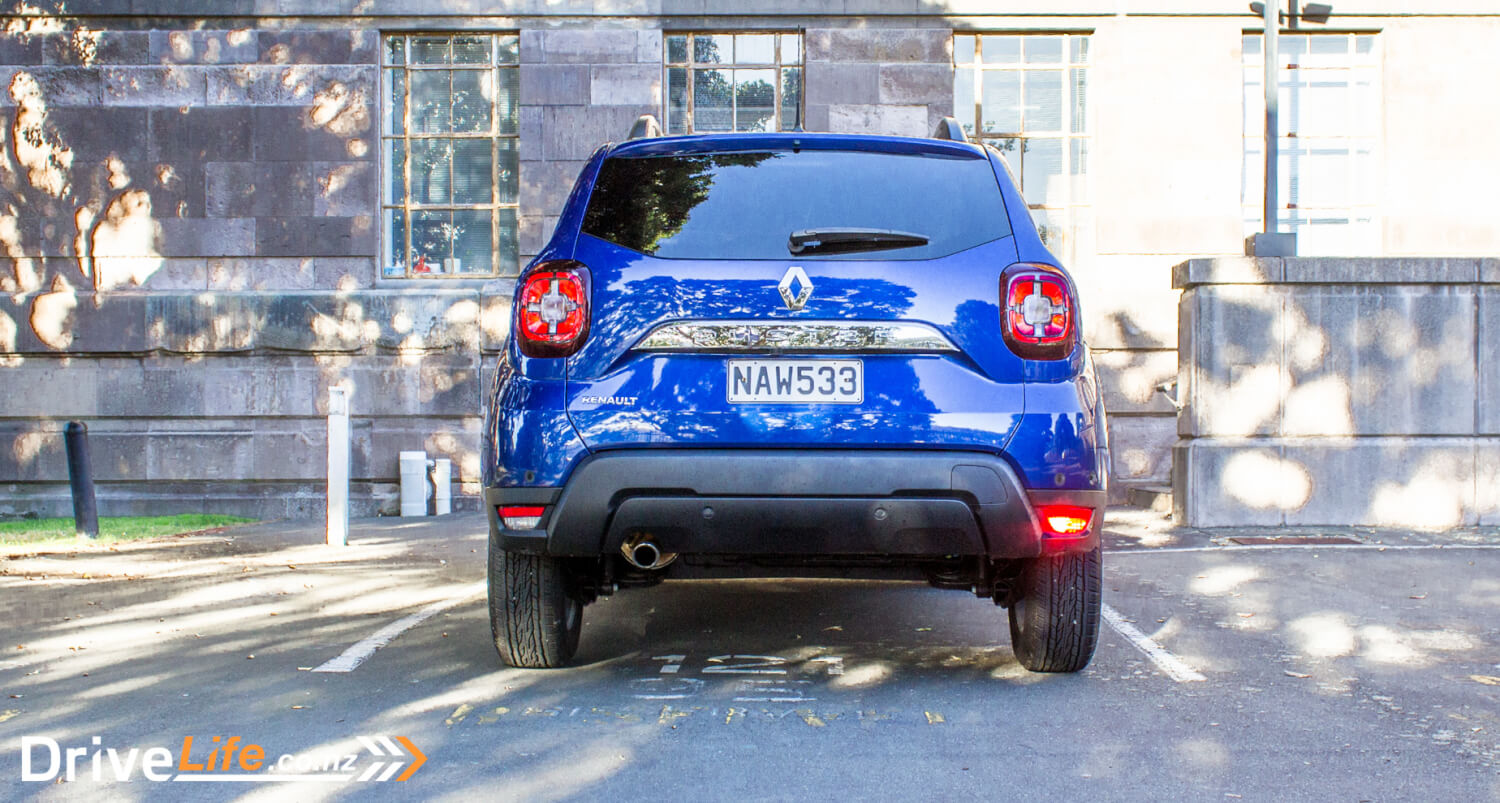
Side and front on, it’s all very simple, clean and inoffensive. No outlandish or futuristic design here that you might expect from a euro car. It melds into the traffic easily, and is not full of sharp creases and edges like other new SUVs. There are some little design touches that make the Duster different, like the fake plastic air vents running up the rear of the front guards, the silver mirror caps, and those funky tail lights.
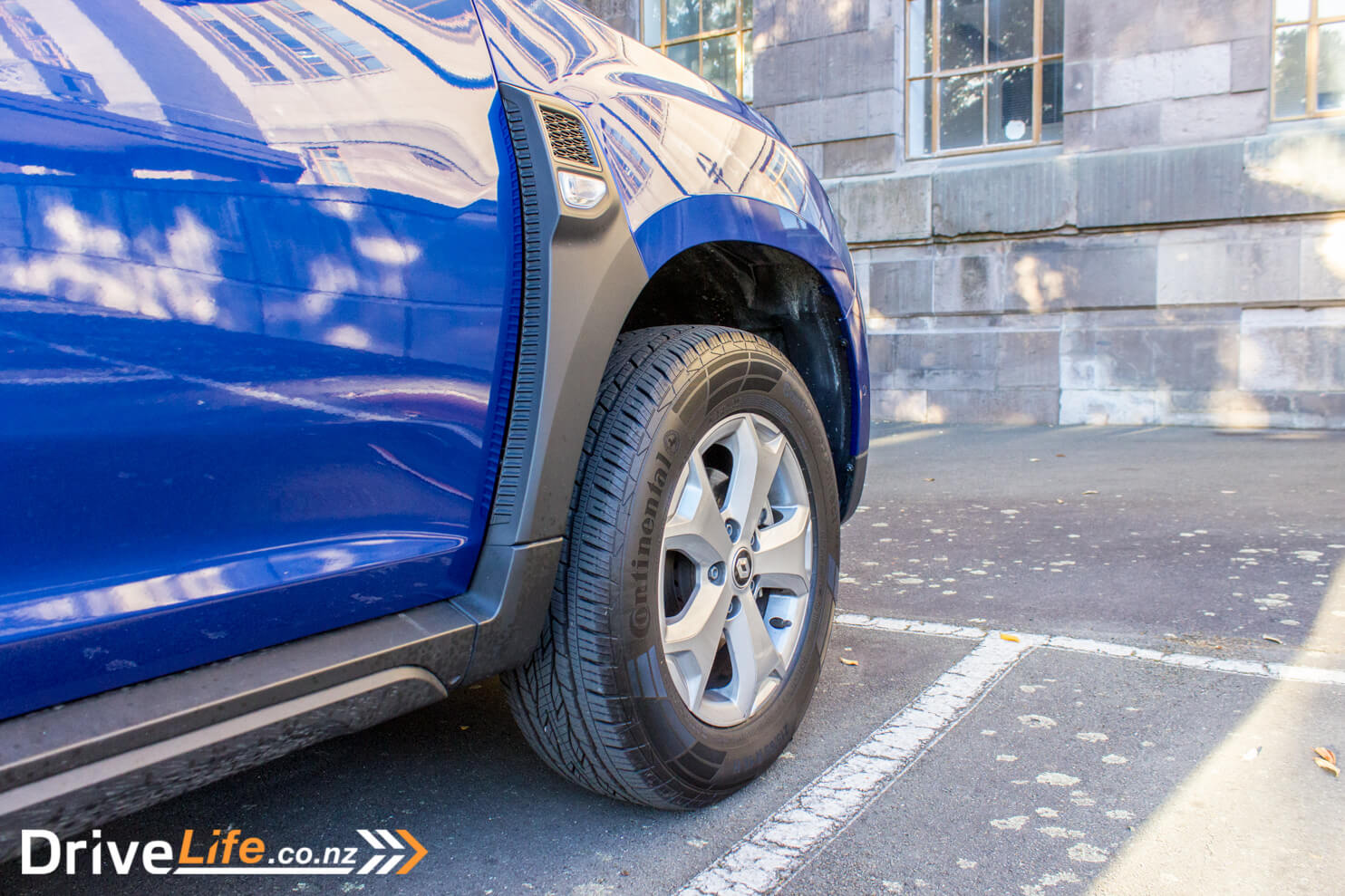
Our car was finished in Iron Blue, and while the 16” alloy wheels looked a little small on the car, it’s probably the ground clearance that blows your mind. It is only front-wheel drive, but there’s gallons of ground clearance there, meaning the car should do well on the odd jaunt into a farmer’s paddock. That ground clearance is 205mm according to Renault, and in comparison the AWD Subaru Forester is just 15mm higher.
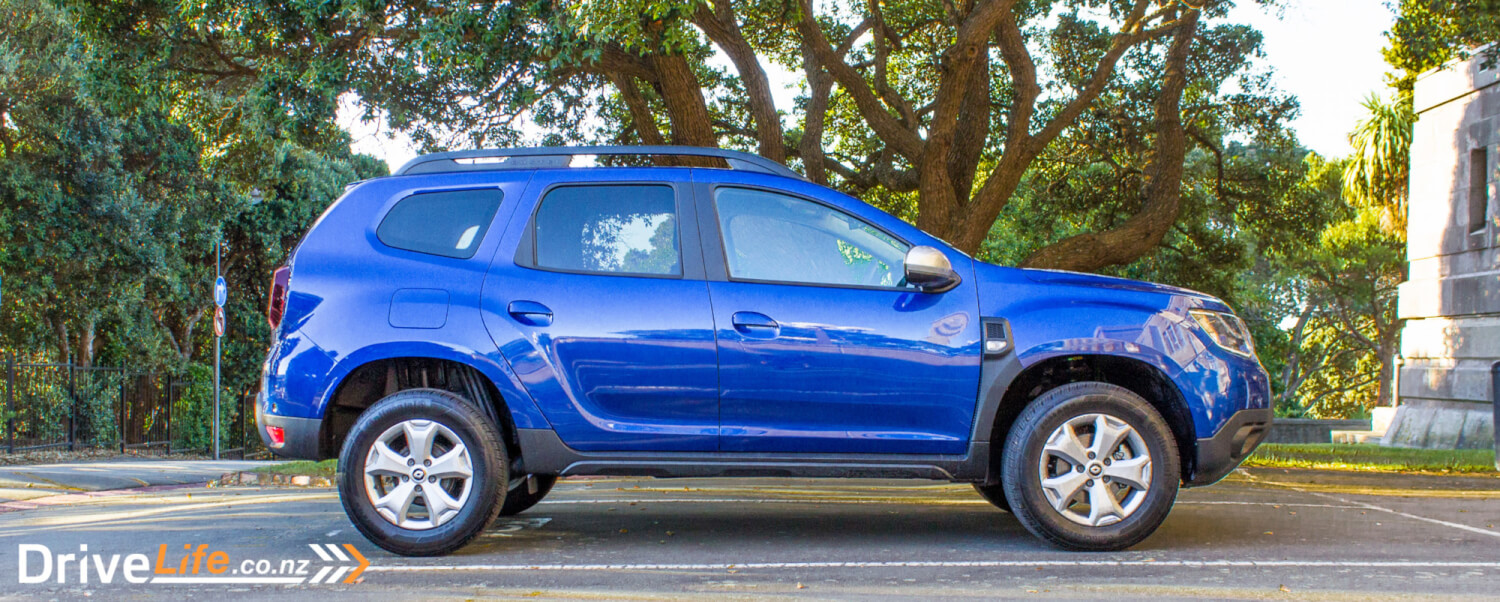
What’s The Interior Of The 2021 Renault Duster Like?
Light and airy are key aspects of the interior of the Duster. While there’s acres of hard, black plastic, with large side windows and a large windscreen there’s plenty of natural light inside the car. All the upholstery is black, but the headlining and pillars are ivory coloured, so it doesn’t feel too tomb-like.
There’s plenty of storage places for your stuff, and seemingly everywhere you look there’s another place to put things, including a wide cellphone shelf on the passenger’s side of the car.
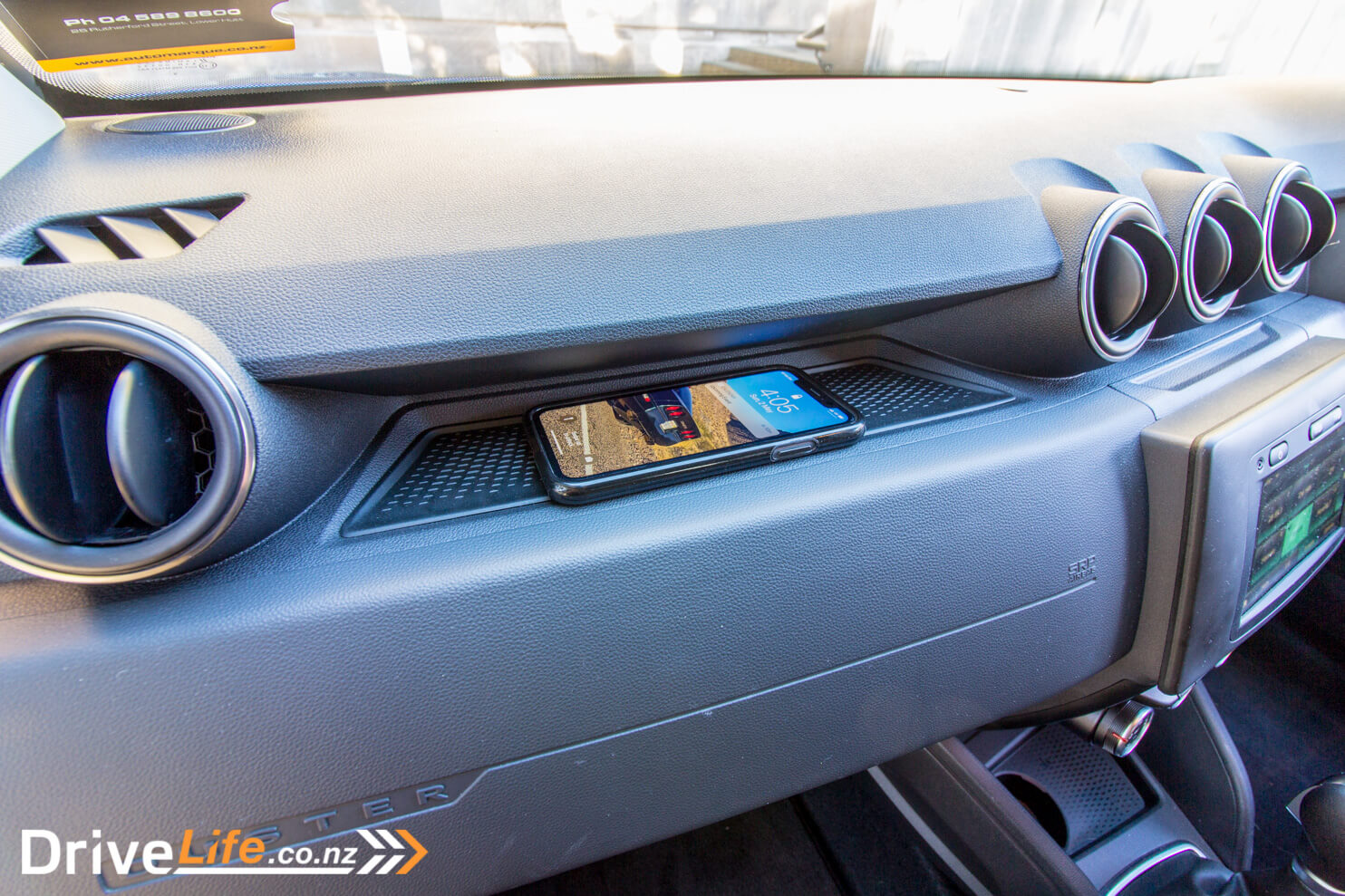
Being a euro there’s the obligatory ashtray, but this is removable so you can just chuck it in the glovebox.
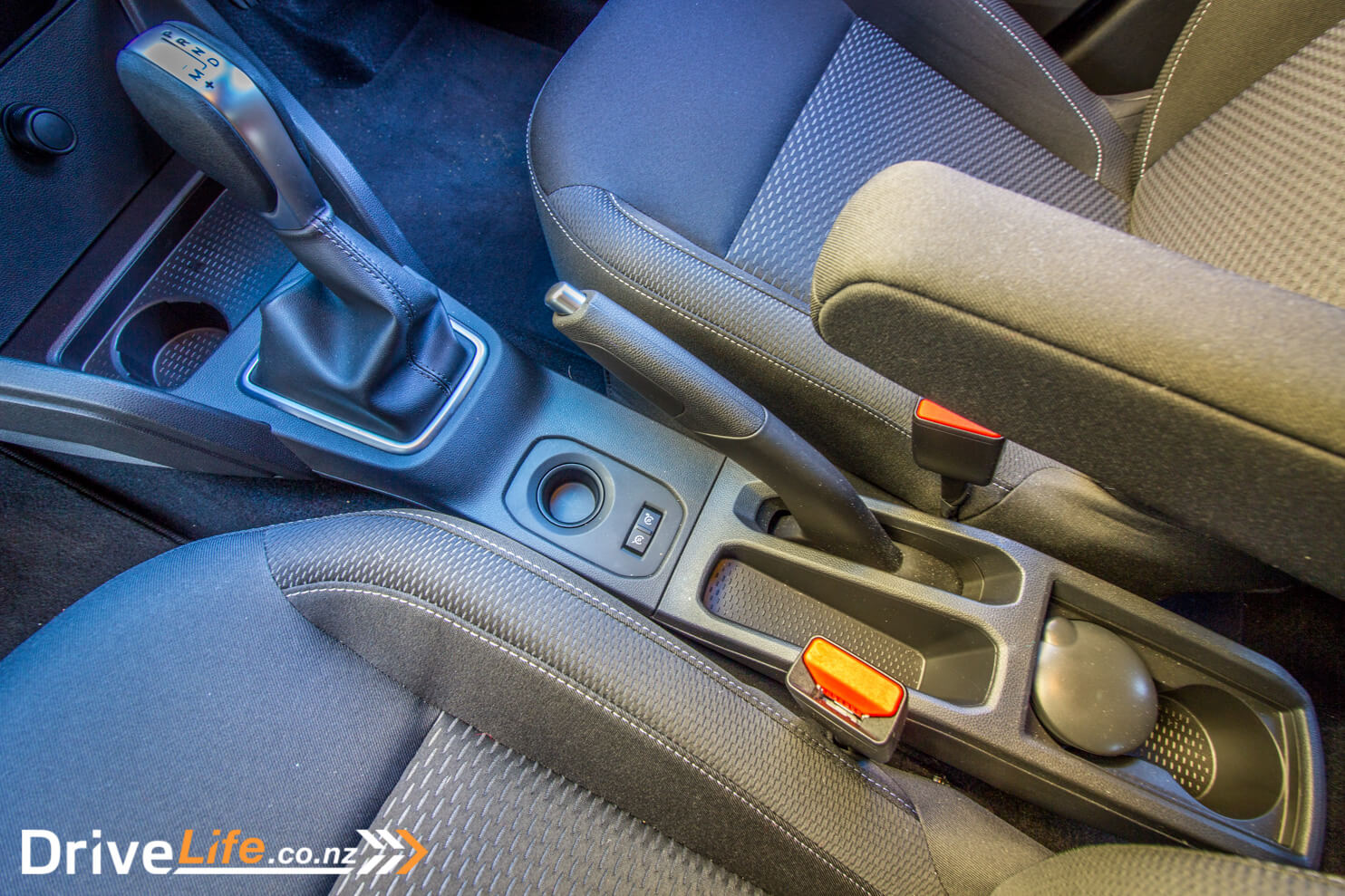
Rear legroom is more than ample, and in the boot there’s no under floor storage as is common these days, but on the bonus side of things there is a full-sized spare wheel (steel, not alloy) under the car. The boot is a good size too, at 445 litres with the rear seat up, and 1,478 with it down. It’s a damn practical utility car to use everyday.
Honestly, it’s a nice place to spend the week commuting and doing stuff on the weekend. I didn’t really miss goodies like heated seats and a heated steering wheel. The Duster has a simple, straightforward, no-nonsense cabin.
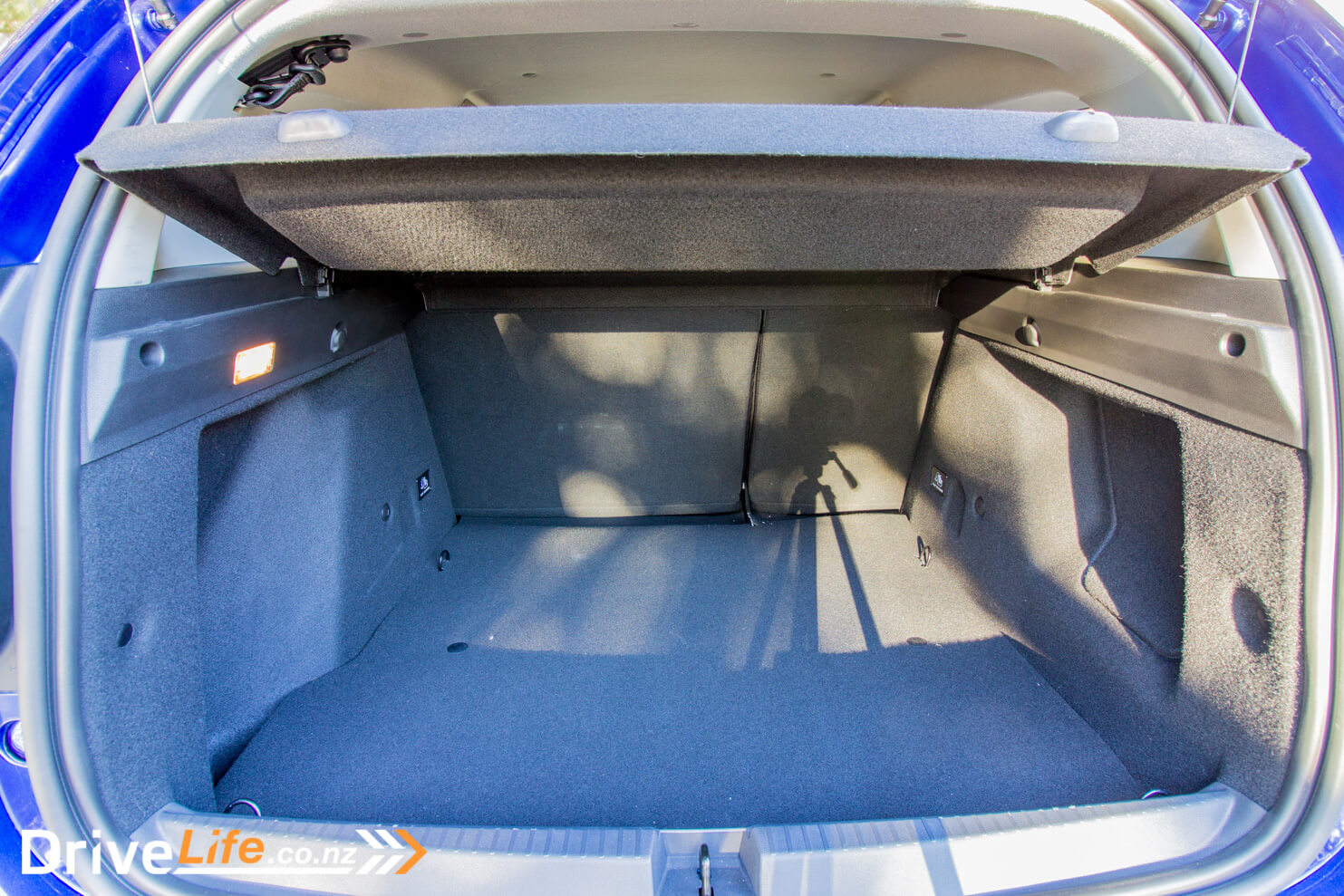
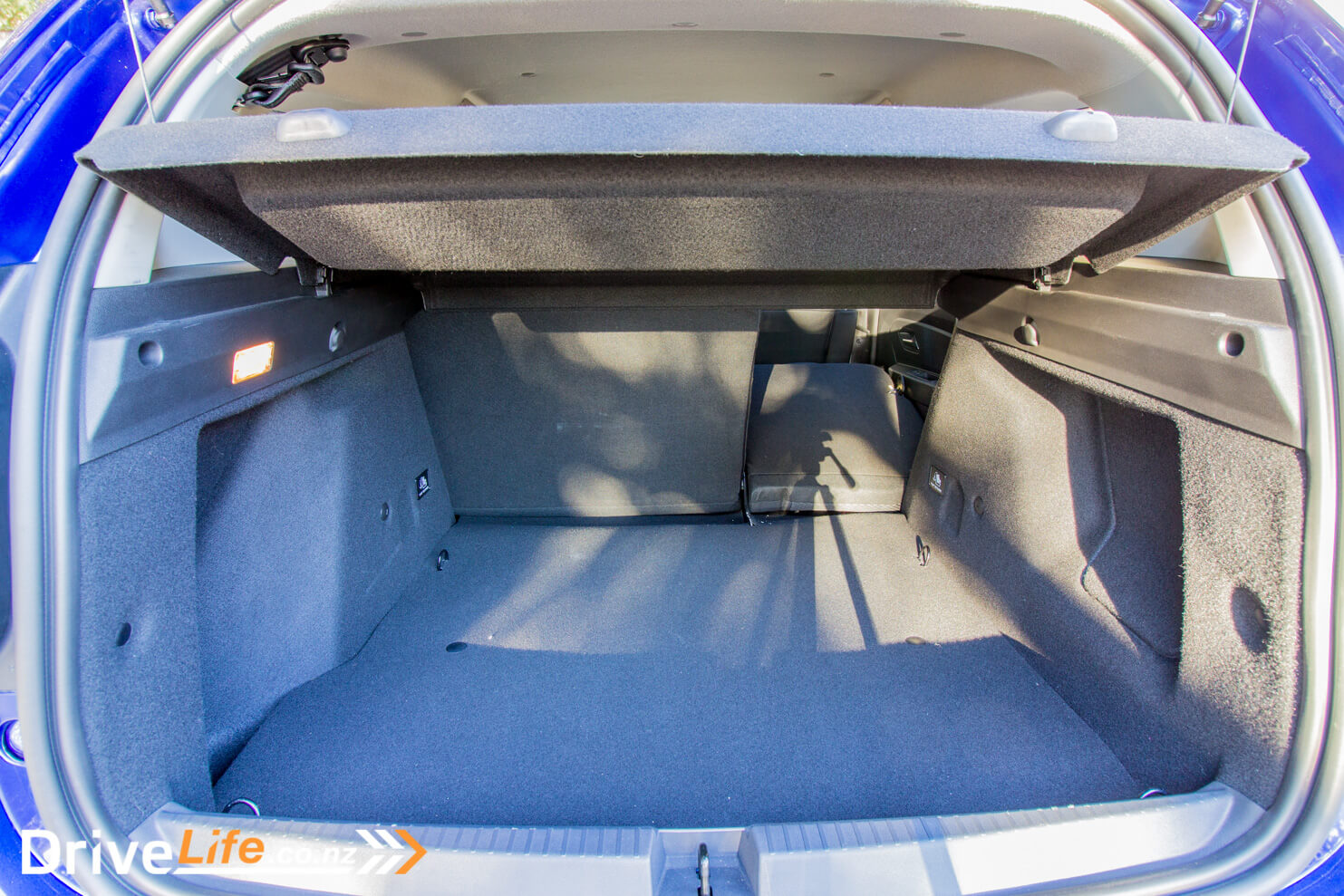
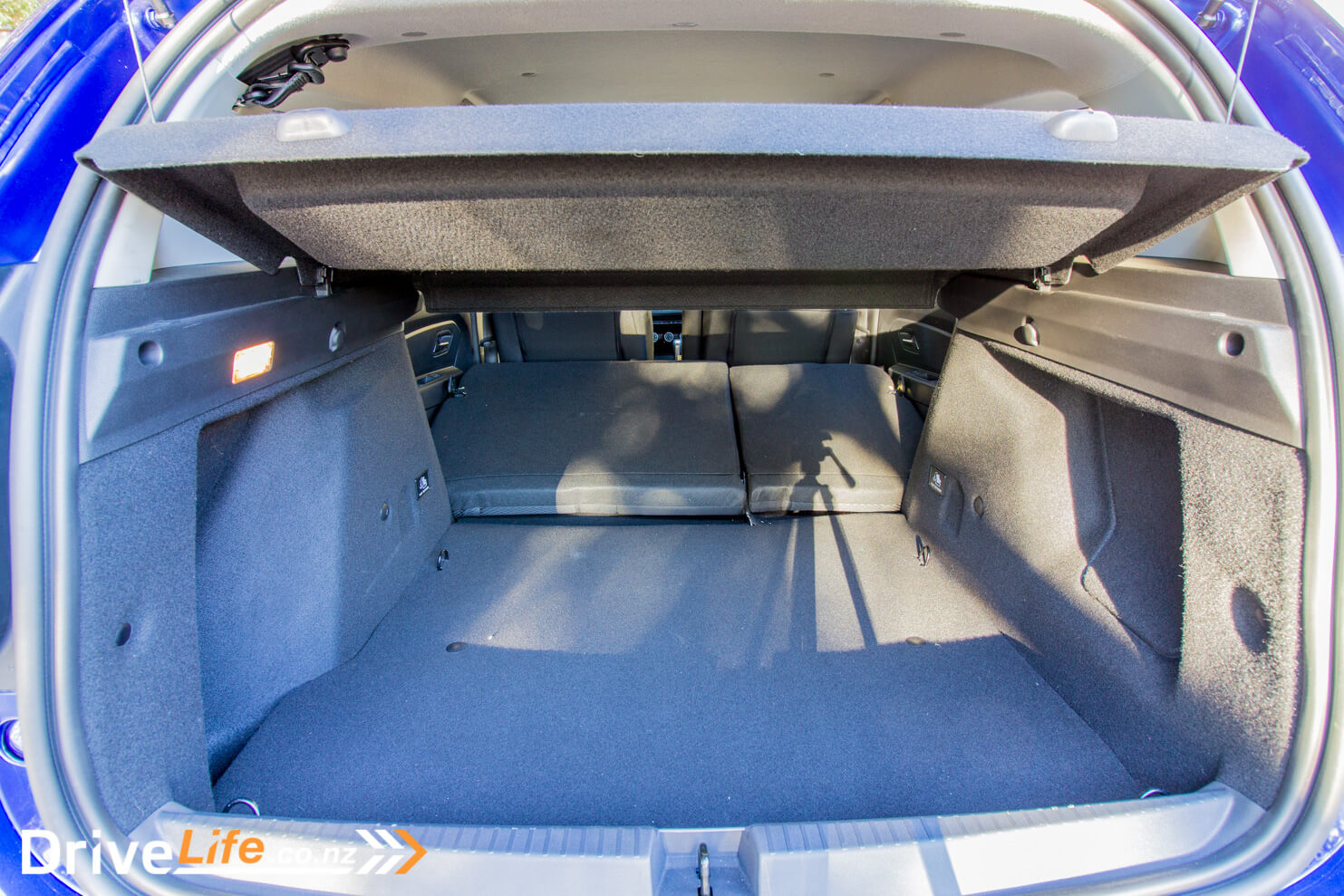
What’s It Like To Drive A 2021 Renault Duster?
When we’ve tested French cars in the past, they’ve always had their little quirks. There’s Peugeot, and most recently we had the 2008 GT with it’s tiny steering wheel and heads-up dash. You get used to this quite quickly, but it’s a little different. I still remember the 5-door DS4 Crossback, with its fixed rear windows. Again, something you get used to, but it’s not the norm.
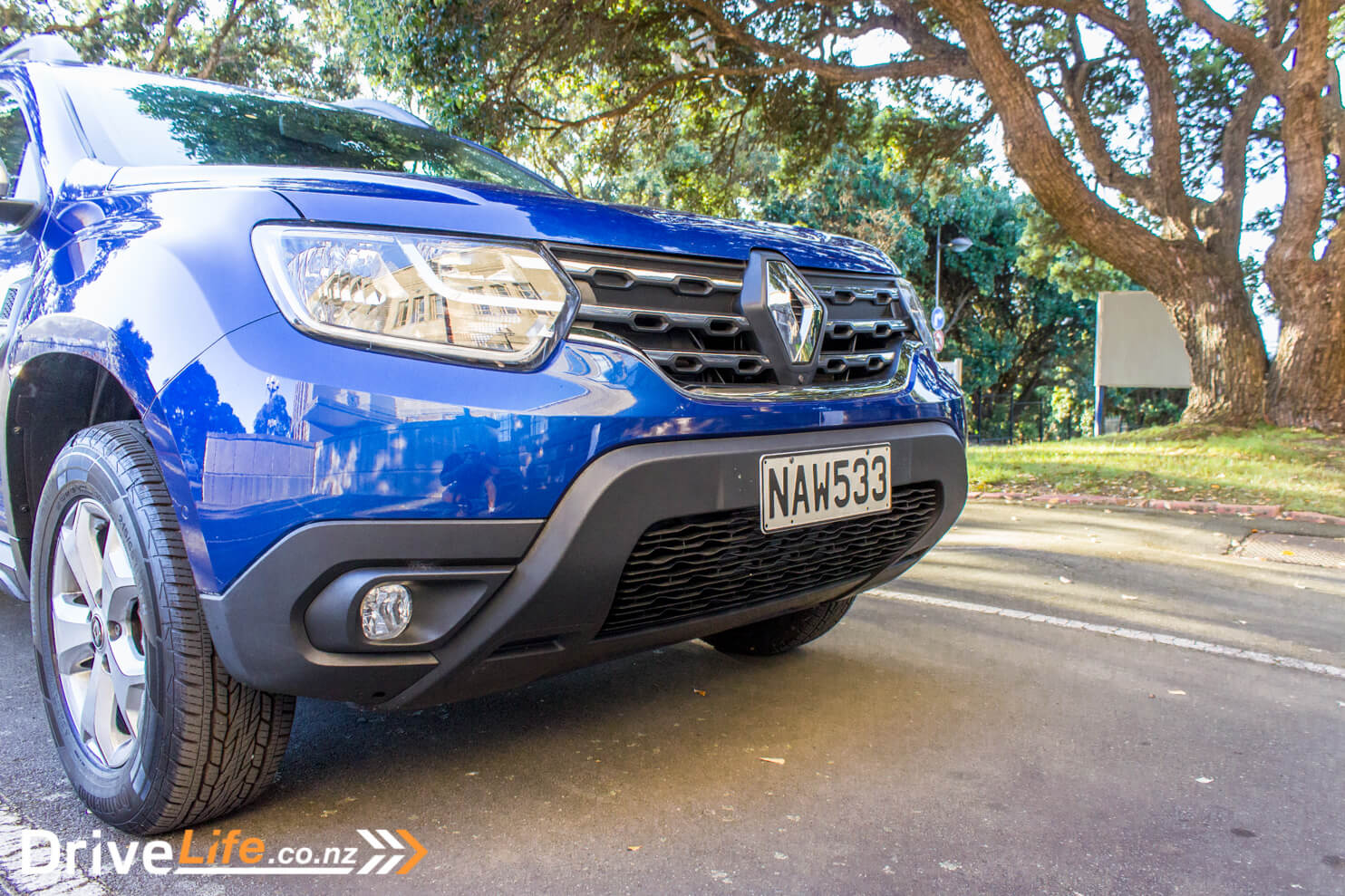
So, the Duster. I drove this car for a week, and while I only managed to put 300 kilometres on it, I kept waiting for some little quirky thing to pop up, something that would tell me this is a French car. Nothing happened; While driving, no strange or different thing happened, nothing to remind me that this wasn’t a Japanese or Korean SUV, and that’s a good thing.

This means the Duster feels very mainstream when you drive it. And it drives very well; it’s quiet and smooth, it’s easy, and it’s not at all fussy or different. It may have a CVT transmission but it does have a stepped mode and this will kick in on full throttle acceleration, so it doesn’t feel like a CVT at all at times.
The engine is extremely smooth, and dare I say it, Toyota could learn something from driving the Duster. Toyota’s all-new three-cylinder 1.5 in the Yaris is a whole lot noisier than this 1.6 Renault. It’s smooth too, right out to 7,000rpm (there’s no redline) and so very quiet on the motorway. There is some wind noise at 100km/h, but with the engine turning over at 1,600rpm at that speed, it’s all very relaxed.

In saying that, with 84kW of power and 1,260Kg of weight, it’s no rocket. And with maximum power at 5,500rpm and maximum torque at 4,000rpm, you have to stoke it along to get the best from it. It’s peppy off the mark though, and it’s easy to keep up with traffic in town, but the midrange is lacking and passing on the motorway will take a bit of a kick in the gas pedal. That’s where you can sometimes think that the CVT is a ‘real’ automatic, as it will shift down a fake gear change when you prod the gas pedal hard enough. It’s not a perfect CVT but it’s a whole lot better than I expected. Still on the drivetrain, it’s nice that on what is a relatively budget car, the bonnet has gas struts to hold it up. You normally need to spend a lot more cash to get these.
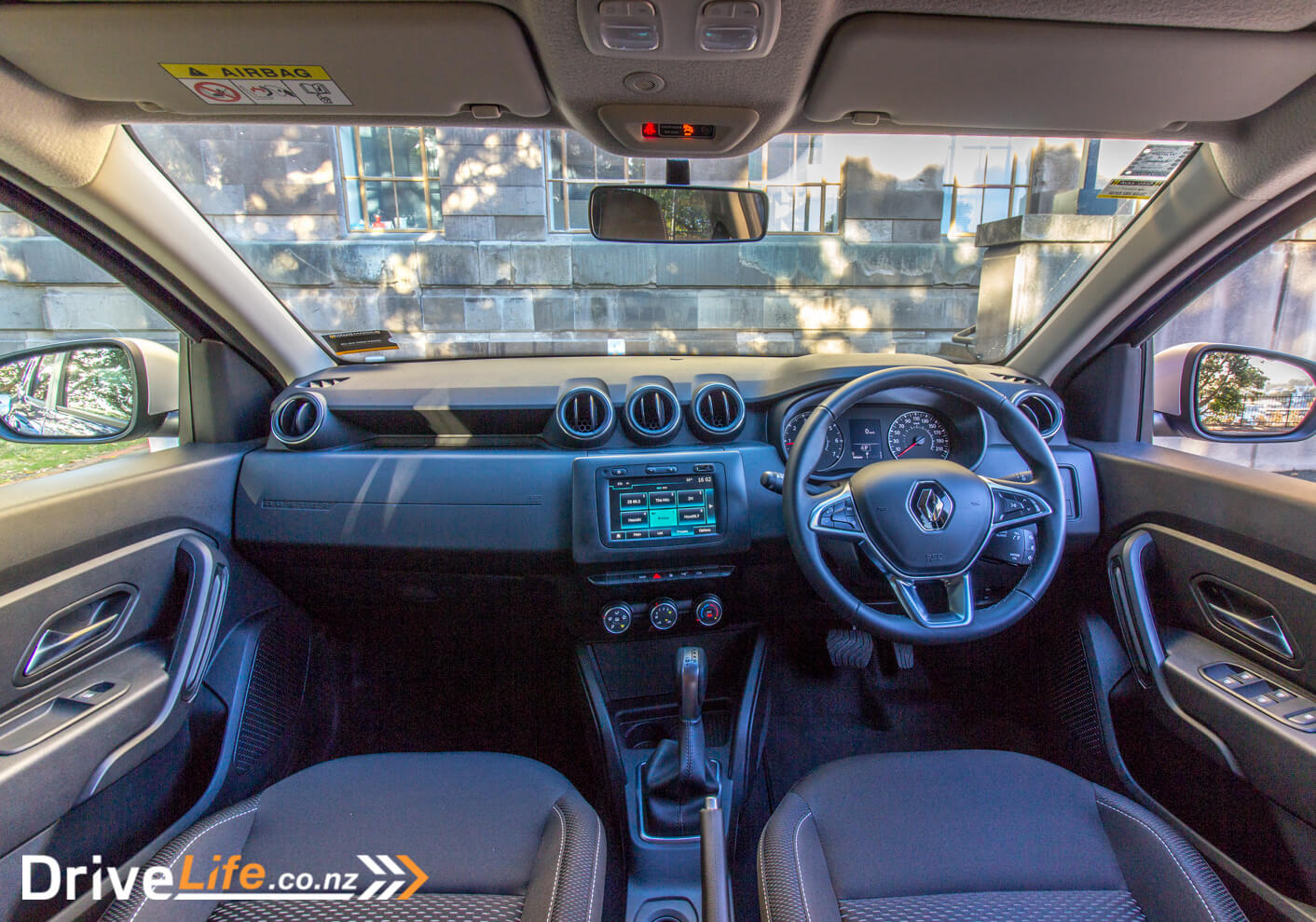
Ride quality is very good, as you’d expect in a French car – but let’s not mention that the car is built in Romainia, where it’s known as the Dacia Duster, a car first introduced in 2010. A compliant ride means the car can get a bit roly-poly on the corners, but grip is there and you shouldn’t get any surprises. Also as expected, pushing the car too hard will see understeer kick in, and tyre scrubbing at the front. This car isn’t about being thrown around the bends, it’s much more of a leisure cruiser than that.

There’s no fancy drive modes in the Duster, and that’s not going to affect anyone. I’m not sure how many SUV drivers change their drive modes on a regular basis. There is an Eco mode button though, and I tried this a few times. It’s okay on the motorway at a steady speed, but does make the car quite lethargic around town. I’d advise just driving the car with Eco mode off and let it do its own thing.
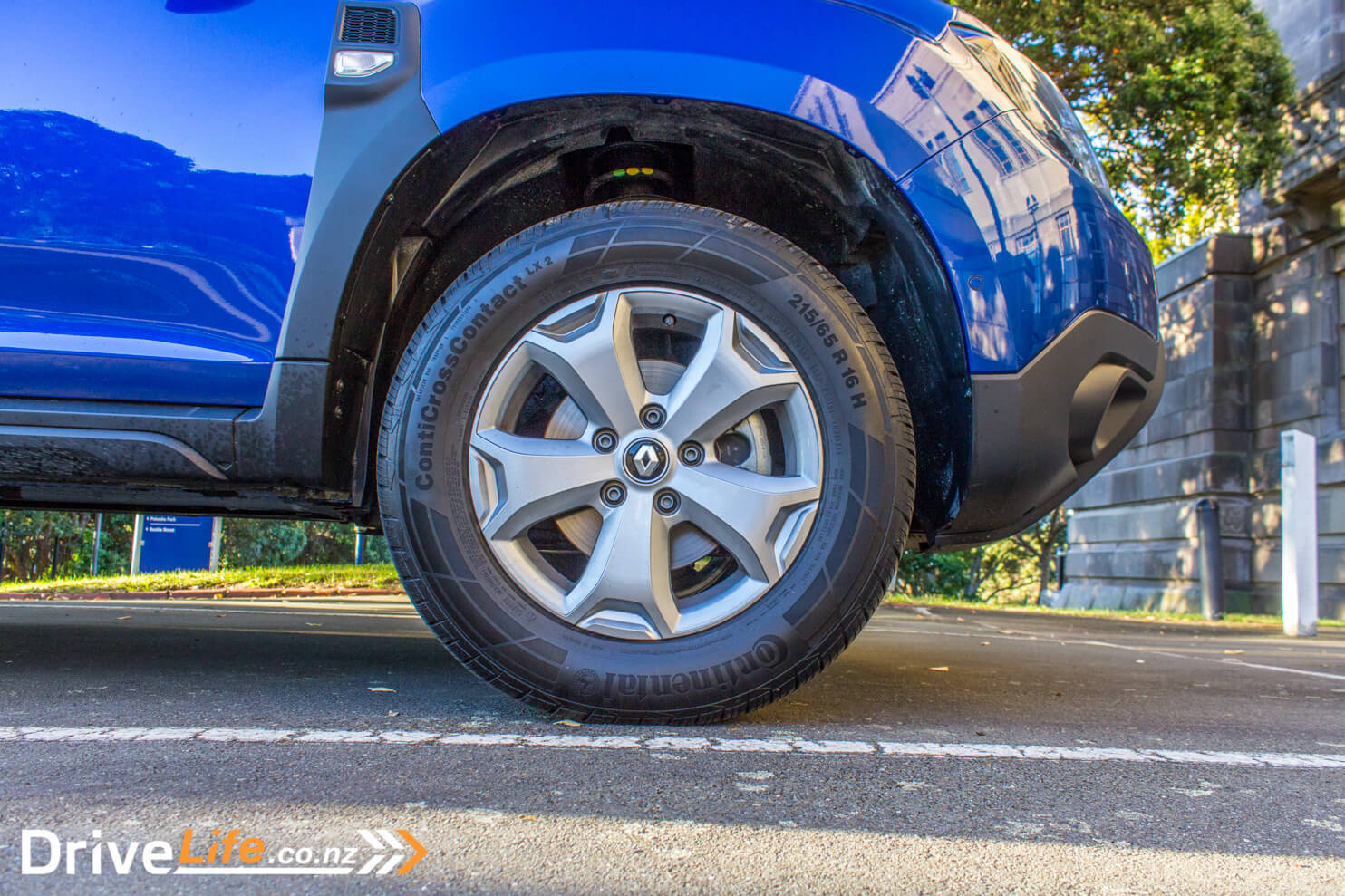
On the central touchscreen, there’s also a Eco display, showing you stars and a rating up to 100. I could never get it past 90, but I expect that’s because of Wellington’s hills. The display itself is, well, low resolution. It’s fairly clear but could seriously do with updating. It is very simple to use, and while there’s a little bit of lag between screens, it’s more than acceptable, but overall it’s a bit of a let down.
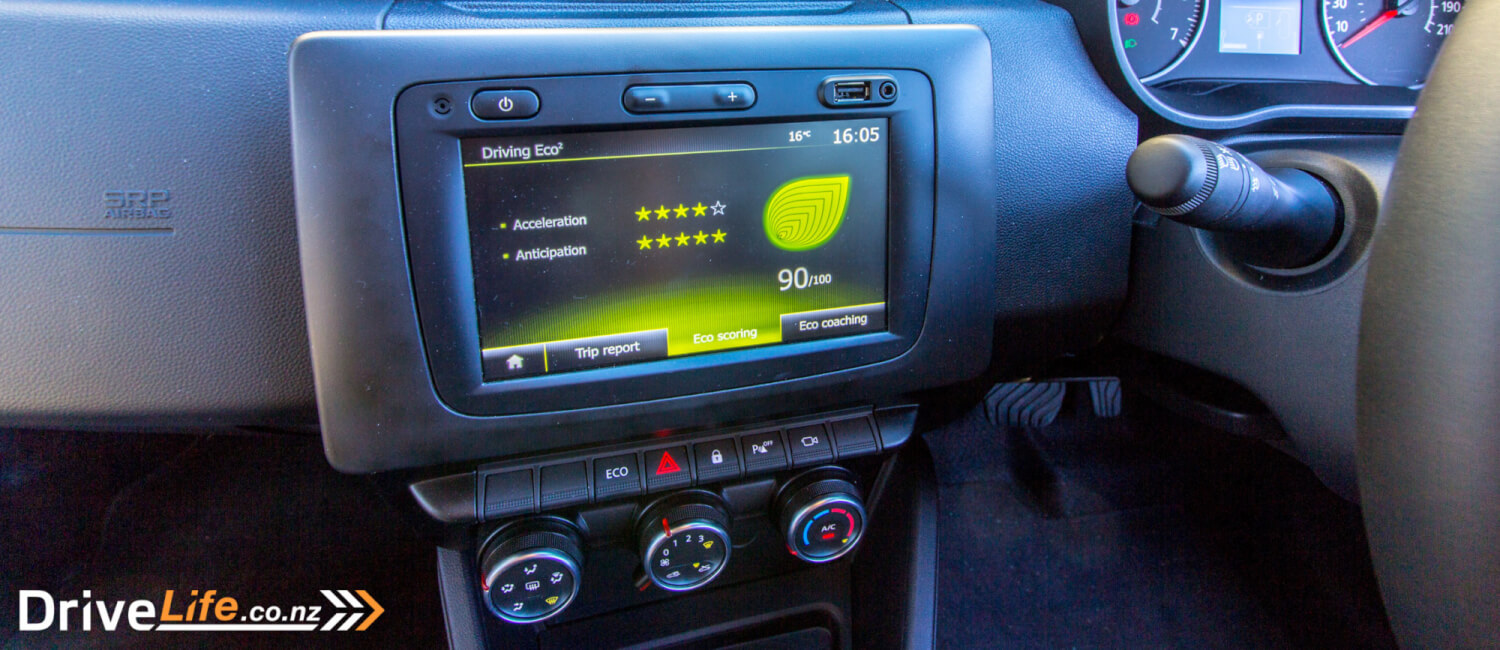
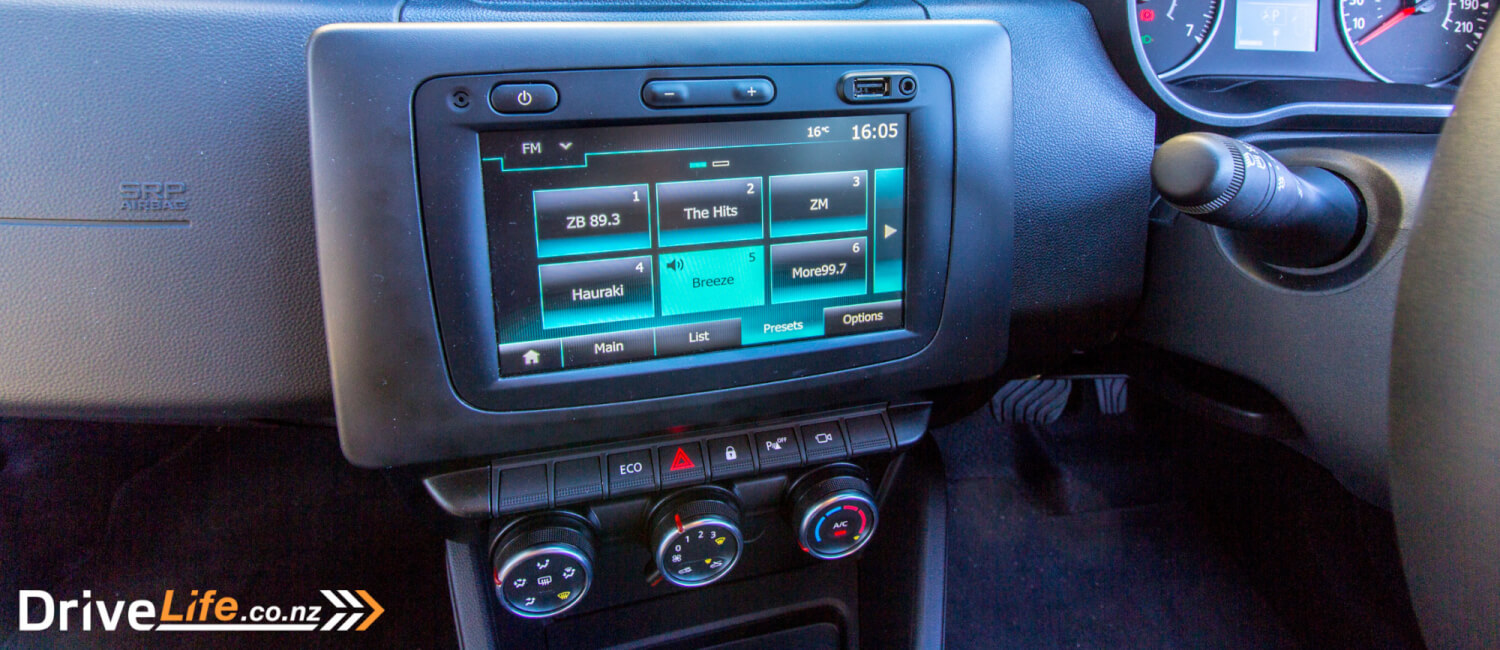

I did find that the car always reverted to radio after getting back in it, and so I’d have to select Media each time if I wanted to go back to Bluetooth for music. I thought we’d gone past this in cars now, but the Duster proved me wrong. Audio quality itself is slightly above average, and there’s an aux port right above the display, along with a standard USB port. There’s no physical volume knob; instead, there are two hard buttons for volume up/down, just above the display.
Still on ergonomics, it was great to see that the Duster has three dials for air con controls. Simple, common, and so easy to use.
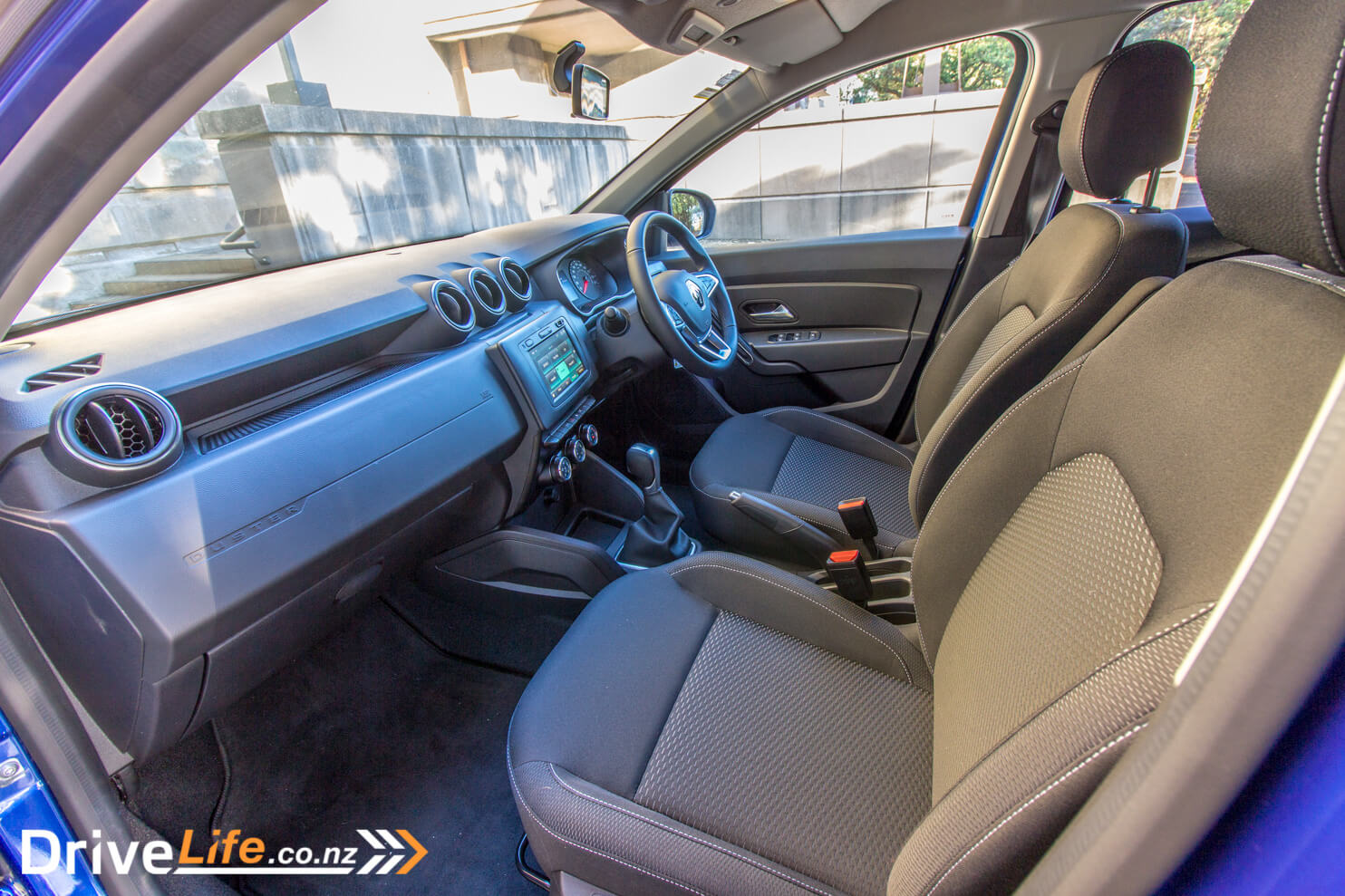
On the Daily Drive, there’s a big C pillars to contend with, along with those upswept rear guards, but overall visibility is good, with nice, big side windows. Since the Duster hasn’t been designed with sexy looks, you get the practicality that comes along with design that works for actually driving the car. While the C pillar is pretty chonky, there is blind spot monitoring – a nice addition at sub $30K. In saying that, I only saw it work a few times on the motorway. I’m not sure if this was a fault of the car, or looking at the manual, there’s only certain times that it kicks in.
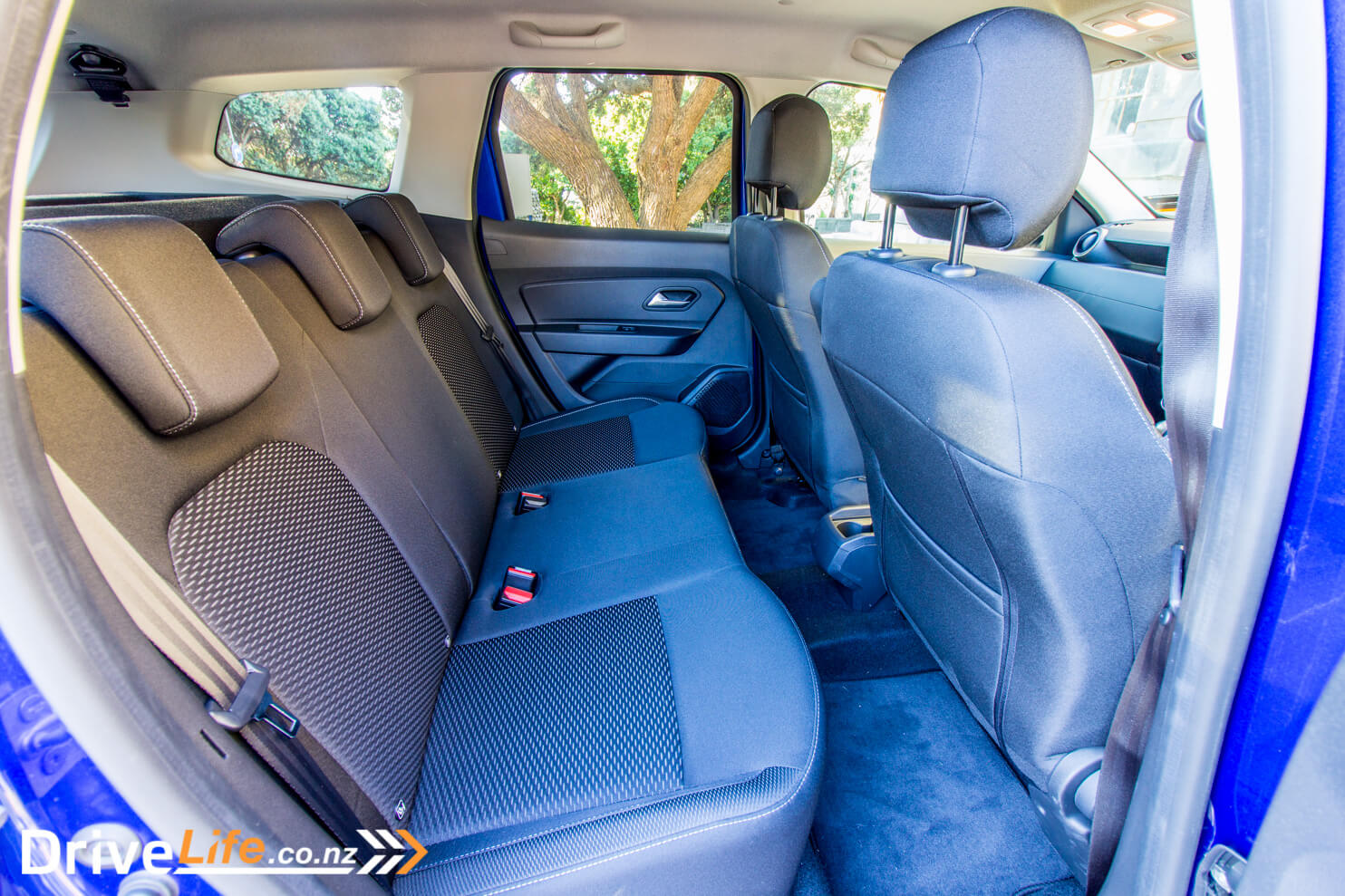
The handbrake and gear lever in the Duster fall nicely to hand, and I mention this as I’ve had a few in a row where this wasn’t the case. It’s not really rocket science; the gear lever should be easily reachable, and it is in the Duster.
It was great to see SatNav standard in this car at that price, and there’s a few little extra tweaks that the SatNav in the Duster provides. One of these is large signs on the central display, showing you what lanes are what on the motorway, as you approach a change. Obviously you need the maps showing on the screen to see this, but you don’t actually have to be using navigation to see these signs, which is normally the case. The second bonus is a friendly little ‘bing’ if you exceed the speed limit. You don’t need to have the maps up for this to work, again a nice touch.
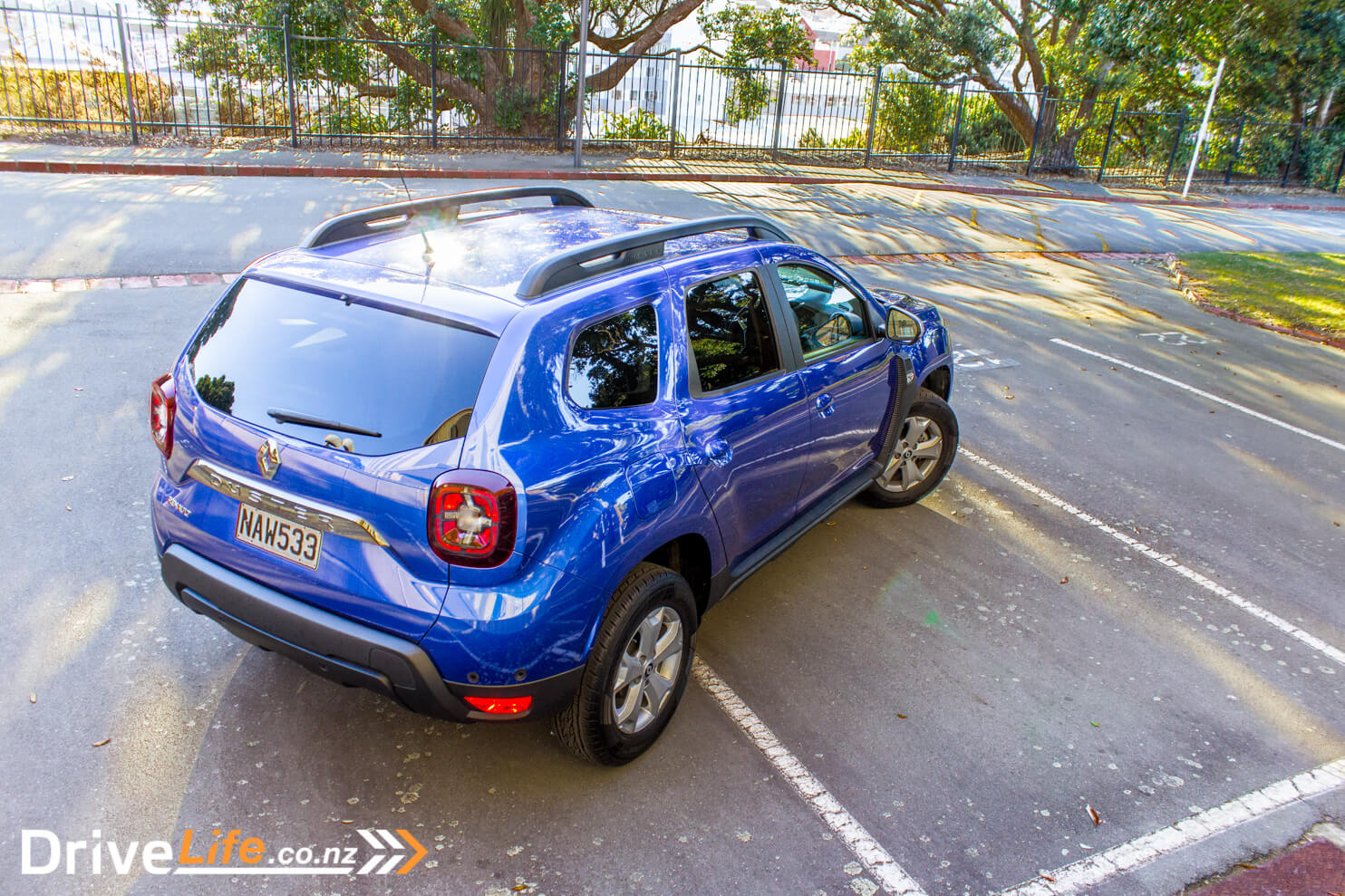
As mentioned, driving the car feels very mainstream, but it wouldn’t be a French car without one little thing that was different. The cruise control/speed limiter toggle switch is down on the centre console, by the handbrake. Yes, that is a weird place to put it. I got used to it quickly enough, but it’s a mile away from the normal place of buttons on the steering wheel, or a cruise control stalk. At least you are shown the set speed for the cruise control or speed limiter on the dash, and that’s always appreciated.

While there’s no cruise control stalk, there is an audio stalk. So instead of having volume, mute, and track/station up/down on the steering wheel, they’re on a stalk on the right-hand side of the steering wheel. Believe it or not, it works really well, and after a day I never had to look down there to adjust the volume or change tracks. The stalk itself doesn’t move, so it’s all controlled by buttons on the stalk.
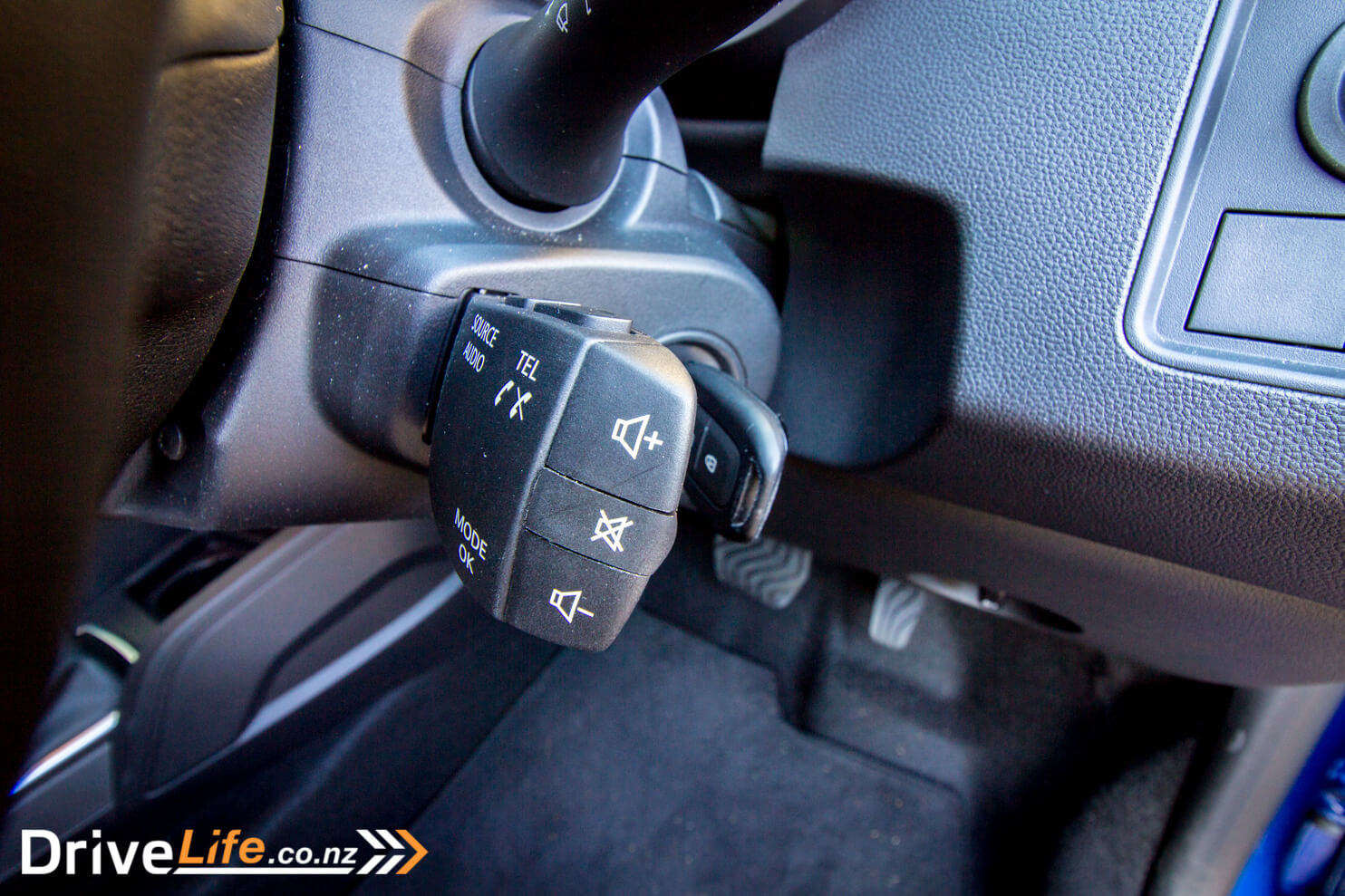
The downside of this is that since there’s no keyless start, the ignition key needs to go in right behind the audio stalk. It’s not too awkward to get to it, thankfully.
Sometimes, Euro cars have a weird driving position, where (for example) the pedals can be offset. This isn’t the case with the Duster, and there’s a nice symmetry between the pedals, steering wheel and seat. It all adds to that ‘I’m a normal car’ feeling. The seats themselves are fairly firm, but comfortable enough. They could sure do with a lot more side support though, as there’s little of it when on a slightly windy road. The driver gets manual lumbar and height adjustment, so at least you can move that seat around how you want it.
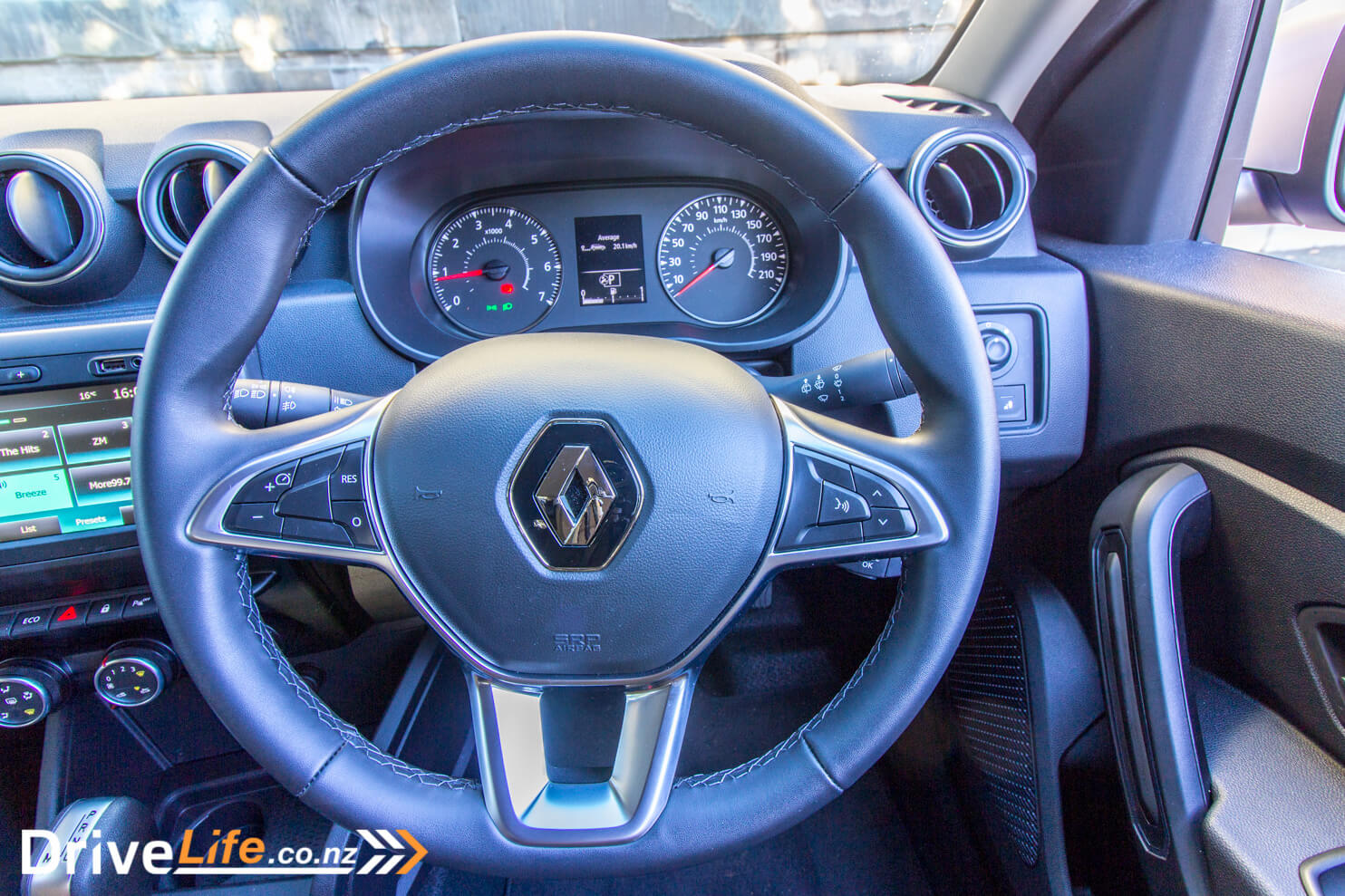
The only thing missing for the driver is the footrest – there isn’t one. I can’t remember the last time I haven’t seen one in a car, so I’m not sure on the reasoning behind this. Not the end of the world, though.
Still sitting in the driver’s seat, the speedo goes up in increments of 20km/h, starting at 10km/h. This means there is a 50km/h mark, but none at 100. Still, there’s a nice and clear digital speedo to use in between the rev counter and analogue speedo. That driver’s information display allows you to pick from a number or driving items, like fuel economy or distance to empty. There is also a Settings option, but this only allows you to change the language, and that’s it.
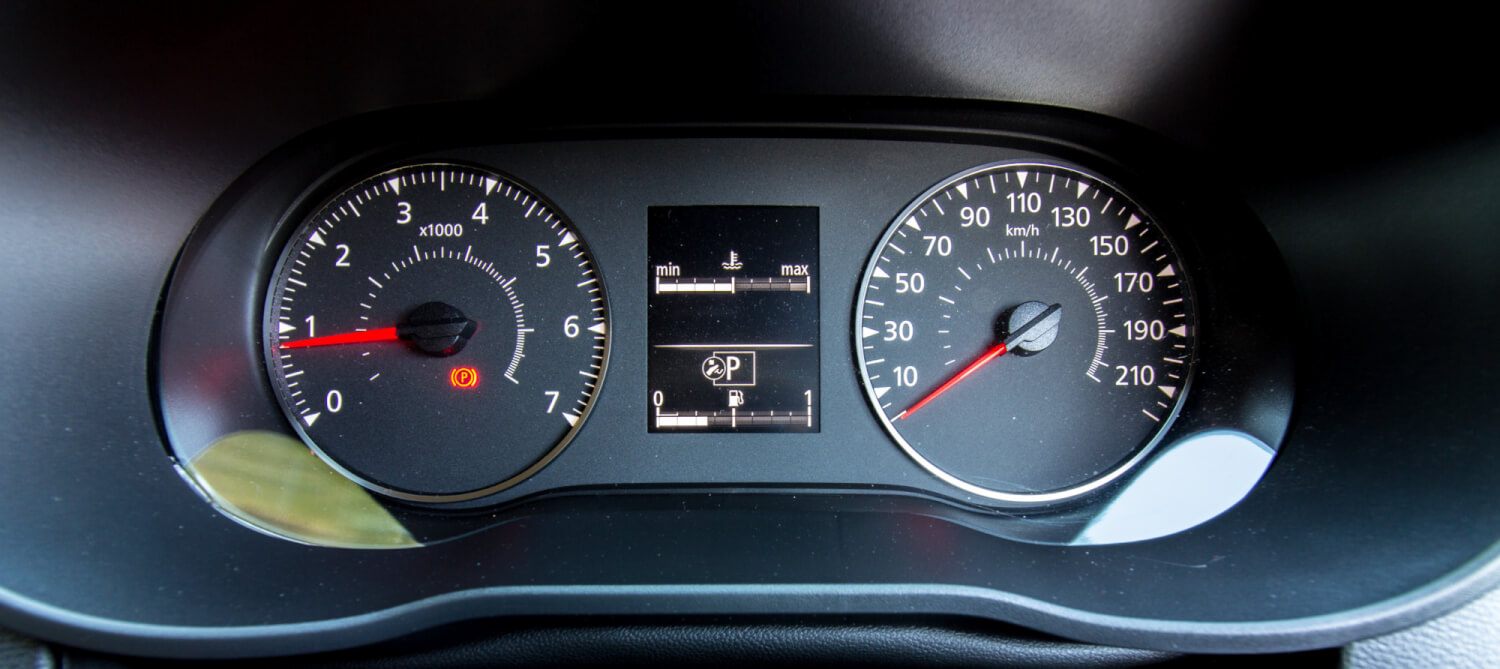
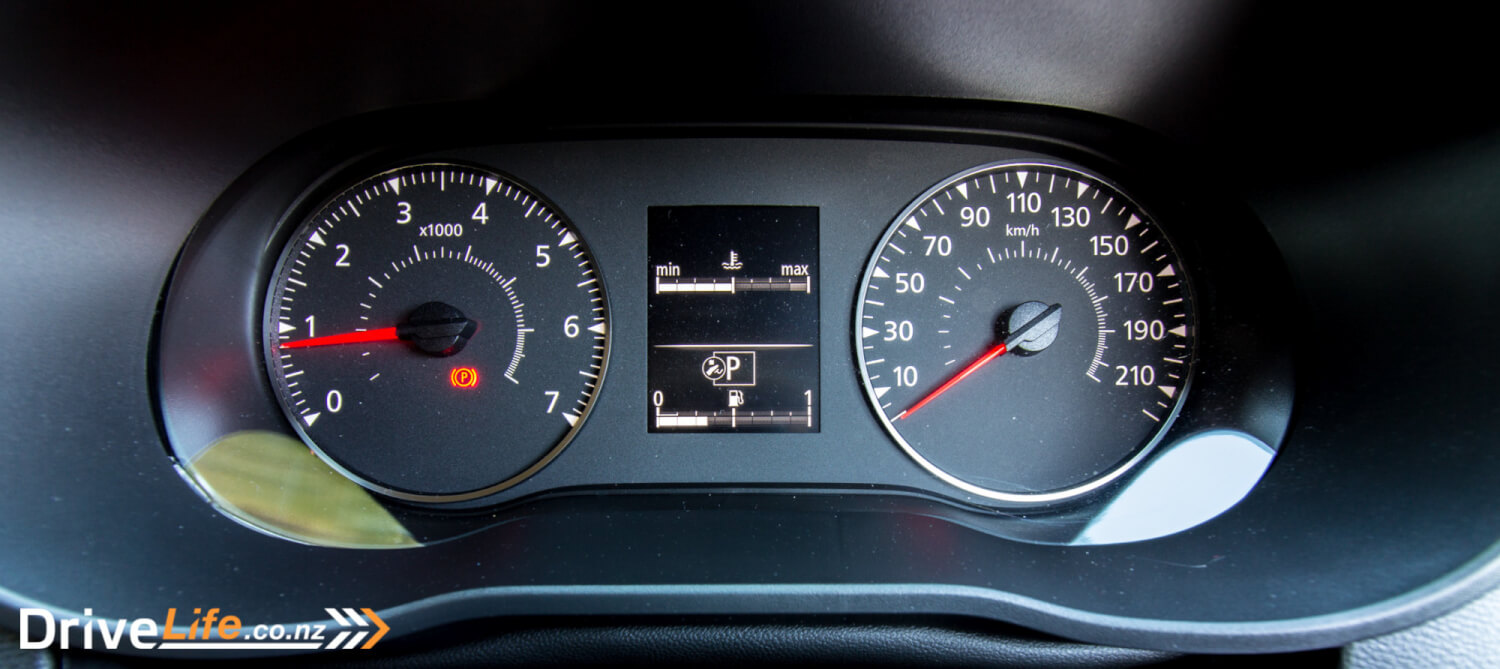
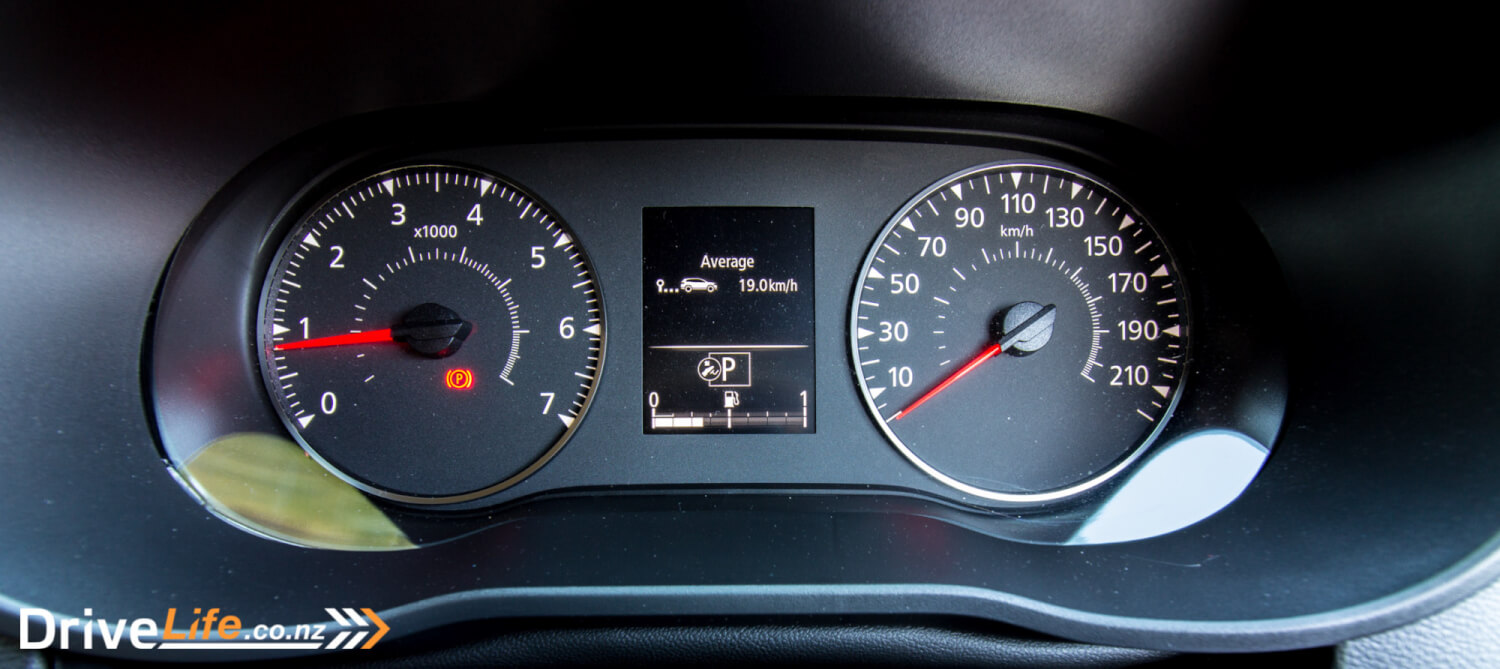

Over my time with the Duster, I managed to use 7.4L/100Km. Renault suggests 6.9, so I was fairly close to that. 7.4 for a 1.6-litre car is just acceptable, but 1.0L/100Km more than the 6.4L/100Km that Alistair got out of the Yaris 1.5 Cross recently.
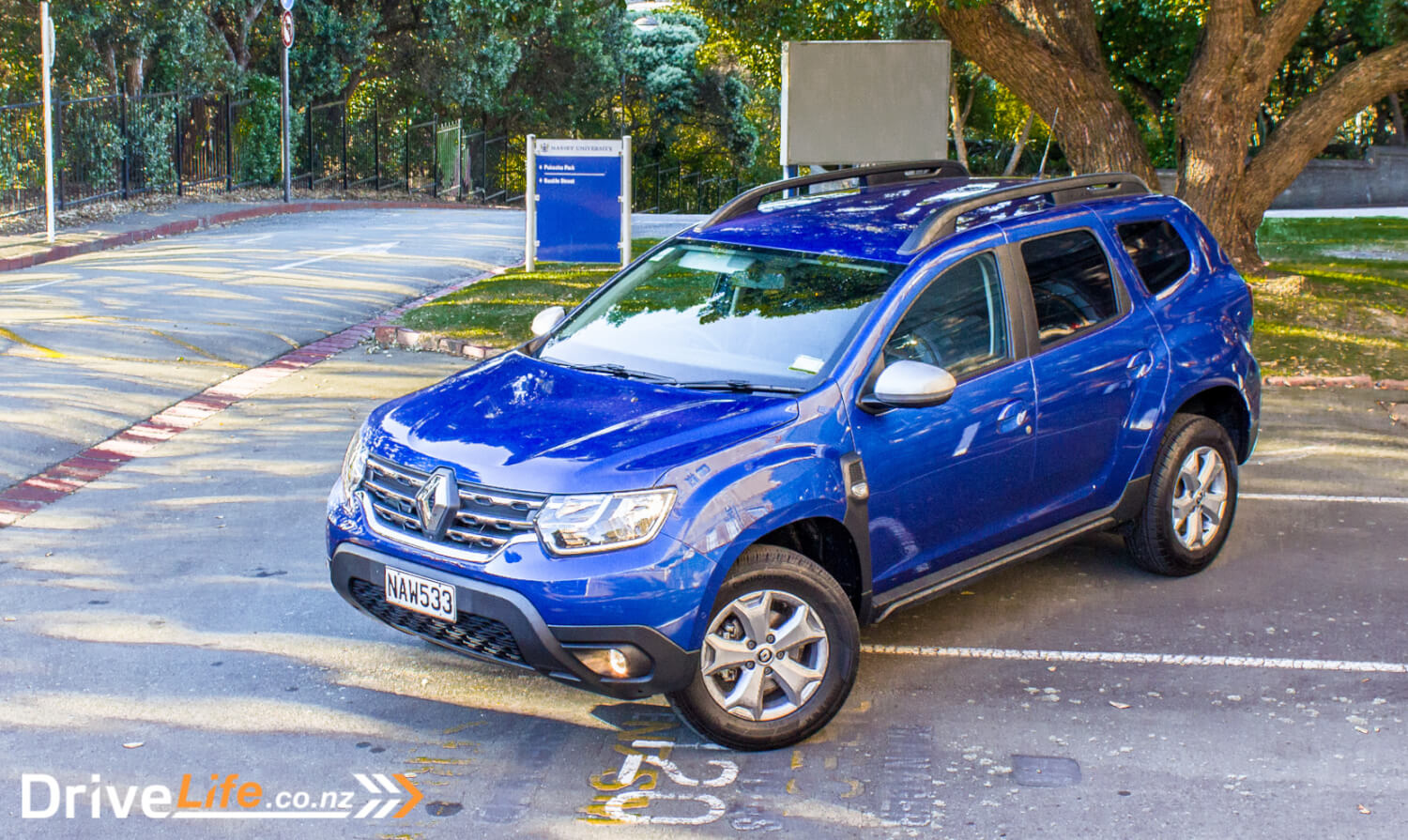
What’s The Competition For The 2021 Renault Duster?
Admittedly, some of these cars in the table are smaller than the Duster, so keep that in mind. There’s one thing that’s very clear: there’s a lot of competition in this sector.
| Brand/Model | Engine | Power/ Torque kW/Nm | Seats | Cargo capacity, litres | Fuel L/100km | Price |
| Nissan Qashqai ST | 2.0-litre 4-cylinder Petrol | 106/200 | 5 | 430 | 6.9 | $37,990 |
| Citroen C3 Aircross | 1.2-litre, 3-cylinder petrol turbo | 81/205 | 5 | 300 | 5.2 | $35,990 |
| Hyundai Kona Entry | 2.0 litre 4-cylinder | 110/180 | 5 | 361 | 7.2 | $34,990 |
| Ford Puma | 1.0-litre, 3-cylinder, petrol-turbo | 92/170 | 5 | 410 | 5.3 | $34,990 |
| Peugeot 2008 Active | 1.2-litre 3-cylinder Turbo | 96/230 | 5 | 434 | 6.5 | $33,390 |
| MG HS Excite | 1.5-litre 4-cylinder turbo | 124/250 | 5 | 463 | 7.3 | $32,990 |
| Kia Seltos | 2.0-litre 4-cylinder petrol | 110/180 | 5 | 468 | 6.8 | $31,990 |
| Honda HR-V S | 1.8-litre, 4-cylinder petrol | 105/172 | 5 | 437 | 6.9 | $31,990 |
| Mahindra XUV SUV W6 | 2.2-litre petrol-turbo | 103/320 | 5 | Na | na | $30,990 |
| Toyota Yaris Cross GX | 1.5-litre, 3-cylinder petrol | 88/145 | 5 | 390 | 5.4 | $29,990 |
| Suzuki S-Cross Ltd | 1.4-litre, 4-cylinder turbo petrol | 103/230 | 5 | 440 | 5.9 | $29,990 |
| Ssangyong Korando | 2.0-litre, four cylinder petrol-turbo | 120/280 | 5 | Na | 7.7 | $29,990 |
| Renault Duster | 1.6-litre, 4-cylinder petrol | 84/156 | 5 | 445 | 6.9 | $29,990 |
| Haval H6 Premium | 2.0-litre, 4-cylinder, turbocharged petrol | 145/345 | 5 | Na | na | $29,990 |
| Mitsubishi ASX LS | 2.4-litre, 4-cylinder petrol | 125/226 | 5 | 393 | 7.9 | $27,990 |
What’s The Pros and Cons For The 2021 Renault Duster?
| Pros Smooth, refined engine Ride quality Space/usability Airy cabin Good driving position Audio stalk SatNav at this price | Cons Can feel a bit cheap inside Very low-resolution central display Audio reverts to radio |
| Vehicle Type | Five-door, front-wheel drive, compact SUV |
| Starting Price | $29,990 |
| Price as Tested | $29,990 |
| Engine | 1.6-litre, 4-cylinder petrol |
| Power, Torque kW/Nm | 84/156 |
| Transmission | CVT |
| Spare Wheel | Full-size steel |
| Kerb Weight, Kg | 1,265 |
| Length x Width x Height, mm | 4341×18041693 |
| Cargo Capacity, litres | 445/1,478 |
| Fuel capacity, litres | 50 |
| Fuel Efficiency, L/100Km | Advertised Spec – combined – 6.9 Real World Test – combined – 7.4 Low Usage: 0-6 / Medium Usage 6-12 / High Usage 12+ |
| Towing Capacity Kg, unbraked/braked | 625/1,400 |
| Turning circle, metres | 10.14 Small: 6-10m / Medium 10-12m / Large 12m+ |
| Warranty | 3 years, unlimited kilometres 3 years Roadside Assistance |
| ANCAP Safety Ratings | Not rated yet |


